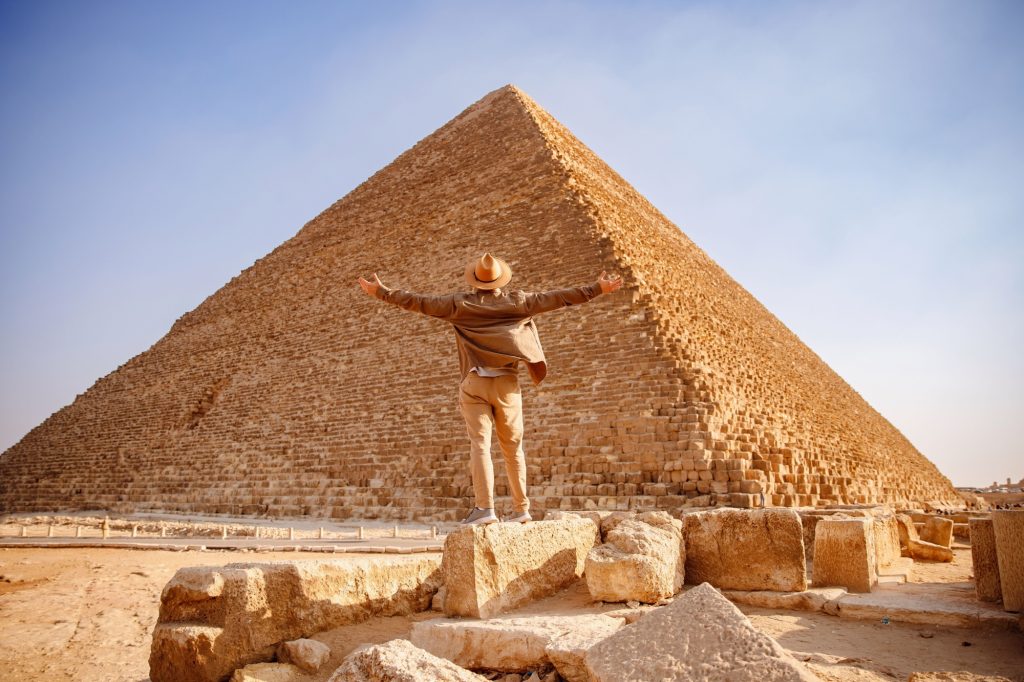Pyramids have been around for thousands of years. Yet there are still details about them that most people never hear, including some bizarre measurements & purposes. Here are seven interesting facts about ancient pyramids that are backed by science. What other cool things do you know about them?
Featured Image Credit: Shutterstock.
The Great Pyramid’s north alignment
Everyone knows how great the Great Pyramid of Egypt is. But there’s so much more to it than its size. The Great Pyramid’s sides miss true north by just a hair, less than three arcminutes. Evidence suggests builders watched a pair of circumpolar stars line up to get that accuracy. That’s right. No compasses, just star-spotting.
Muon scans mapped a hidden void and a separate corridor
When physicists aimed cosmic-ray detectors at Khufu’s pyramid, they caught something unexpected. They saw a long, empty cavity that they called the “Big Void.” It stretches over 100 feet above the Grand Gallery. Years later, the same method turned up a smaller passage tucked behind chevron blocks on the north face. How incredible is that?
Meroë’s royal cemeteries contain over two hundred pyramids
Egypt isn’t the only place with pyramids. In the south of Sudan, the site of Meroë is like a much more crowded version of the Egyptian ones, with over two hundred pyramids in its cemeteries. They’re smaller & much steeper than Giza’s. They were built roughly 800 BCE & 350 CE, and standing there, you can see the pyramids in all their greatness.
A handclap at Kukulkán’s pyramid
Anyone who visits Chichén Itzá should try this. Clap once at the base of Kukulkán’s pyramid, and instead of a plain echo, you hear a sharp chirp that drops in pitch. Studies show the stone steps scatter sound waves in a way that sounds like a birdcall. The effect works best if you’re facing the staircase head-on.
Mayan pyramids were used as observatories
Some Mayan sites have pyramids that aren’t just places for ceremonies. They were built with angles that matched up with the movements of the sun & stars. This includes the Pyramid of the Magician at Uxmal, which has a layout that helped priests follow solar cycles & seasonal changes. That kind of tracking was important for their farming schedule.
The Pyramid of the Moon held sacrificial burials
At Teotihuacan’s Pyramid of the Moon, archeologists uncovered some grim things. They found burials of people with tied hands next to animals like jaguars & eagles. They also found obsidian blades and other offerings placed with them. But that’s not all. These were sealed into the structure during different construction stages, meaning ritual sacrifice was built into the process.
Nubian pyramids often included decorated chapels
The cemeteries of ancient Nubia include pyramids with chapels in the front. These weren’t empty spaces, as they had walls with colorful reliefs & inscriptions that described offerings to the dead. Families could visit and leave food or ritual items there. It helps them keep a connection with the buried.
The following sources were consulted in the preparation of this article:
- Ancient Egyptian chronology and the astronomical orientation of pyramids
- Precise characterization of a corridor-shaped structure in Khufu’s Pyramid by observation of cosmic-ray muons
- The Royal Pyramids of Meroe: Architecture, Construction and Reconstruction of a Sacred Landscape
- A theoretical study of special acoustic effects caused by the staircase of the El Castillo pyramid at the Maya ruins of Chichen-Itza in Mexico
- Astronomical and Cosmological Aspects of Maya Architecture and Urbanism
- Animal Management, preparation and sacrifice: reconstructing burial 6 at the Moon Pyramid, Teotihuacan, México
- Animal Matter in Indigenous Place-Thought: A Case from the Moon Pyramid, Teotihuacan


